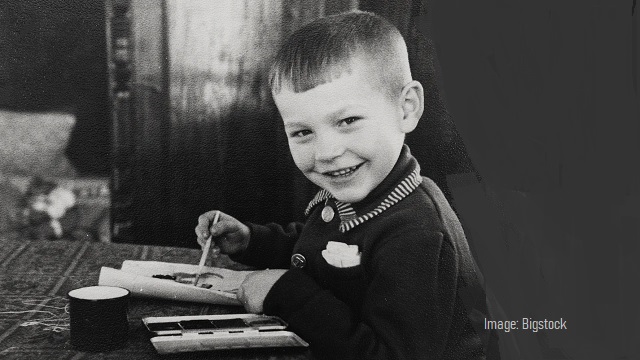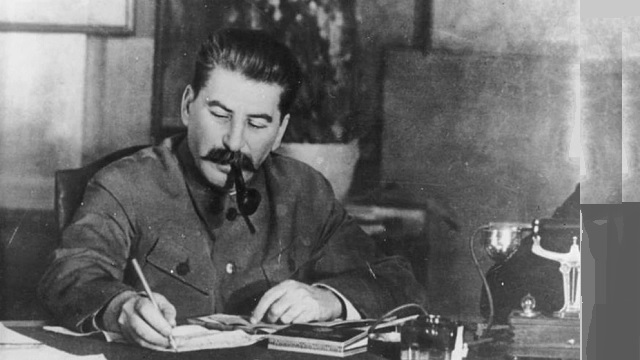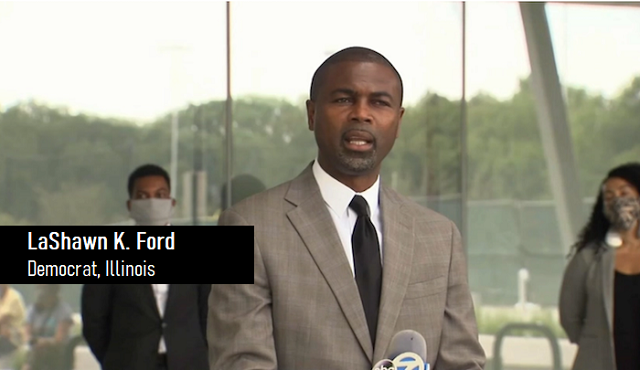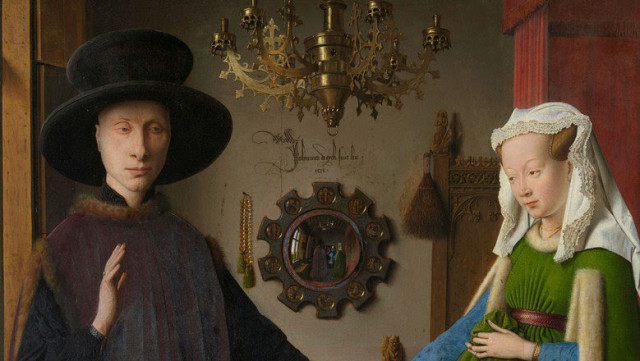Forget Basement Campaign — It’s Been A Whole Basement Presidency For Joe Biden

Critics of President Joe Biden have begun dusting off the “basement campaign” allegation now that the 2024 election cycle is in full-swing, but a low-profile, press-free campaign would fall right in line with how Biden has conducted his entire presidency.
During Biden’s run for president in 2020, the now 81-year-old was criticized for running a “basement campaign” as he often stayed in his home studio for media appearances and had limited, low-attendance rallies. Now, as the 2024 election approaches, similar critiques are bubbling after Biden ducked out on a traditional end of year press conference and opted out of a prime-time Super Bowl interview.
He can't get away with a basement campaign, or a Rose Garden campaign, this time around. He's trailing Trump too badly.
— Megan McArdle (@asymmetricinfo) February 16, 2024
Going on his fourth year in office, Biden is averaging about 11 press conferences a year, according to data compiled by the University of California at Santa Barbara’s American Presidency Project. Biden’s average is the lowest since former President Ronald Reagan, who held office from 1981 to 1989, and averaged 5.8 press conferences per year.
The parallel between Biden and Reagan is not a coincidence, historian Barbara Perry, co-chair of the Presidential Oral History Program at the University of Virginia’s Miller Center, told the Daily Caller.
“I think it’s more than coincidental that you have these two presidents with an aging factor. And I don’t mean to say that he’s non compos mentis and he’s going down. I’m not saying that at all. I’m just saying I do think it’s more than coincidental that oftentimes as these presidents get older, they want to do these kinds of pressers less. Prior to that would be the third and most elderly president was Eisenhower, who was well known for having trouble with his syntax,” Perry told the Daily Caller.
“I just think that’s part and parcel of what happens when you have older presidents, that to be on the hair trigger and be able to respond immediately to let’s face it, and I think this is the role of the press is to press and ask pressing questions instead, sometimes may even be hostile or at the very least, be pointed, and ask presidents to explain what they’re doing and why they’re doing things and to be controversial,” Perry continued.
REPORTER: Why isn't Biden doing more press conferences, especially compared to his predecessors?
KJP: The president is communicating with Americans in "non-traditional" ways. pic.twitter.com/EeZGf1nCLH
— Townhall.com (@townhallcom) February 12, 2024
In addition to snubbing press conferences, Biden has participated in fewer interviews with media outlets than his predecessors, according to NBC News. Since his 2021 inauguration, Biden has done 86 interviews with media outlets, NBC tallied. Former President Donald Trump and former President Barack Obama trounce Biden’s numbers, each doing 300 and 422 interviews, respectively, at the same point in their presidency.
When Biden has done sit-down interviews with the media, his administration has often chosen to go the non-traditional route, sometimes avoiding hard-hitting journalists in favor of celebrity personalities. The president has done interviews with the Weather Channel, CBS News’ 60 Minutes, Ryan Seacrest and comedian Conan O’Brien.
In 2024, Biden has already foregone media opportunities. Biden turned down a prime-time Super Bowl interview for the second year in a row. His campaign then claimed that they wanted to give Americans a break from politics during the game, CNN reported. The NFL, however, is notoriously political, playing the black national anthem before the U.S. national anthem while players don helmet stickers reading “End racism” and “It takes all of us.”
“We are being less traditional because less people get their news from traditional mediums than ever before,” a Biden campaign official told CNN.
This year’s Super Bowl was the most-watched program in television history.
After giving an address on border initiatives being debated in Congress, Biden promised reporters on Feb. 5 that he would be back sometime during the week to answer questions. That same week the president unexpectedly gave a press conference to address a special counsel report that had been released that day discussing the president’s physical and mental state. It was widely panned after Biden mixed up the presidents of Egypt and Mexico and snapped at reporters who asked about his age.
Biden again promised to take questions from reporters following remarks on Ukraine funding stalling in Congress. White House press secretary Karine Jean-Pierre dismissed further questions about the president’s promise.
“On Tuesday, President Biden, he said, ‘I’m not going to answer your questions today. I will answer them tomorrow and the day after,’” a reporter asked Jean-Pierre during a press briefing. “What was he talking about?”
“Well, he was outside yesterday, and he took questions from some of you,” Jean-Pierre responded, referring to when the president told the media he was giving them up for Lent. Biden also continued to repeat “Happy Valentines day” as he was asked about a mysterious national security threat.
“And what about today?” the reporter followed up.
“Today I don’t have anything to share beyond what you all know, don’t have anything to add on his public schedule,” Jean-Pierre followed up.
"Happy Valentine's Day," President Biden wished me when I asked about reports that Russia is considering launching nuclear weapons into space pic.twitter.com/IZ3HWcgFeW
— Steven Nelson (@stevennelson10) February 14, 2024
Mark R. Weaver, a GOP strategist, pointed to the quick-witted nature of press conferences as a reason Biden may be conducting less of them.
“It can be a little bit like playing ping pong. So in these gaggles, the reporter can serve the ping pong ball towards him, and he can hit once back, but he can’t hit the next shot or the next shot. He’ll walk away before he does. So [for example a reporter] will say ‘Mr. President, why are the prices still so high?’ And he is able to give a first response he will say ‘Well, that’s because the Republicans in Congress’ right, so we can get a first response out,” Weaver said.
“But then the reporter will follow up ‘no, Mr. President, you did you know, you did this policy, you forgave student loans and and that change this monetary policy, what do you have to say about that,’ and then he’ll mumble and walk away. He can’t hit that second shot,” Weaver continued.
REPORTER: Do you have a plan for Rafah?
BIDEN: *shuffles away* pic.twitter.com/YA7OPLjlbf
— RNC Research (@RNCResearch) February 20, 2024
The White House dismissed questions about the president’s lack of press interactions during a February press briefing.
“The numbers show that President Biden has engaged in about 33 news conferences. Compare that to Obama’s 66 and Donald Trump’s 52 by this time in their presidencies. Can you explain why the President isn’t doing more?” a reporter asked Jean-Pierre on Feb. 12.
“We’re always going to try to find ways — obviously, outside of press conferences as well — t0 — for the President to be out there. And we have found some nontraditional ways. We think it’s important to try and meet the American people where they are,” Jean-Pierre responded.
“As far as press conferences, we’re going to try and make sure when it’s the right time for — for those to happen, certainly we will — we will do so. But it doesn’t mean that this President does not engage with — with the press corps — with the White — White House press corps or with other reporters, journalists out there who have different — different ways with communicating with the American people as well. We think that’s important too,” the press secretary continued, pointing to the amount of times Biden takes questions from reporters while on the road.
Biden does appear more willing to speak to the press when it is spontaneous, whether that be during trips or following a speech.
As of Oct. 17, 2023, Biden has engaged with the press 492 times in an informal “gaggle,” which is more than any other president aside from Trump, the Washington Post reported. The president is averaging about 131 interactions with the press per year as of Feb. 20, according to the American Presidency Project. The number is less than Trump, though far more than Obama who averaged 25 exchanges with the press per year.
Ryan Seacrest asks Joe Biden about his favorite "memories" of 2023.
Biden’s reply: "So many people through the Midwest & in the center of the country, their factories were shipped overseas the last couple times out…"
Scary. Biden’s brain is pudding. pic.twitter.com/ue7xk3EqHA
— Steve Guest (@SteveGuest) January 1, 2024
Perry recounted a time she attended a December 2022 event at the White House and had an opportunity to speak to the president. Biden’s strength, Perry noted to the Daily Caller, is more personal, unexpected interaction.
“About 10 to 15 years, slid off his face between standing on that stage looking kind of tired and coming down and talking to each person standing behind the velvet rope line. And so I do think that part is a shame that to the extent that he is not out as much as maybe he would have been as a younger person meeting and greeting and pressing the flesh because that is his strength,” Perry told the Daily Caller.
While doing fewer press conferences, the Biden White House has still made an effort to meet the Americans through social media platforms such as Instagram and Tik Tok, the Washington Post previously reported. Throughout his presidency, Biden and his administration have leaned heavily on social media influencers in an effort to reach a younger crowd, though some argued to the outlet that the medium allows the White House to control the president’s messaging more.
“I think we should also point out that the press these days and in part may be trying to keep up with social media, may be more confrontational than at other times in long past,” Perry noted. “I mean, certainly the press was confrontational with Reagan, they were confrontational with Nixon, and I would compare him to someone like Trump, who really disliked the press. I don’t think Joe Biden dislikes the press, I think he probably misses the days when he could go toe to toe with them.”
AUTHOR
REAGAN REESE
White House correspondent. Follow Reagan on Twitter.
RELATED ARTICLES:
Biden has nothing to offer but empty gestures and lefty boondoggles
Reporter Asks James Biden If Hunter Smoked Crack In The White House
Biden Weighing Enacting Harsher Asylum Rules — Even After Claiming He Couldn’t Without Congress
RELATED VIDEOS:
The Invasion of America Continues Through Floodgates of Biden Regime
RELATED VIDEO: Nevada Voters Who Didn’t Cast Ballot in 2024 Primary Appear Online as Having Voted | TIPPING POINT
EDITORS NOTE: This Daily Caller column is republished with permission. ©All rights reserved.
















